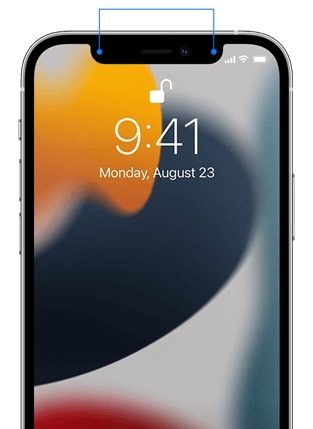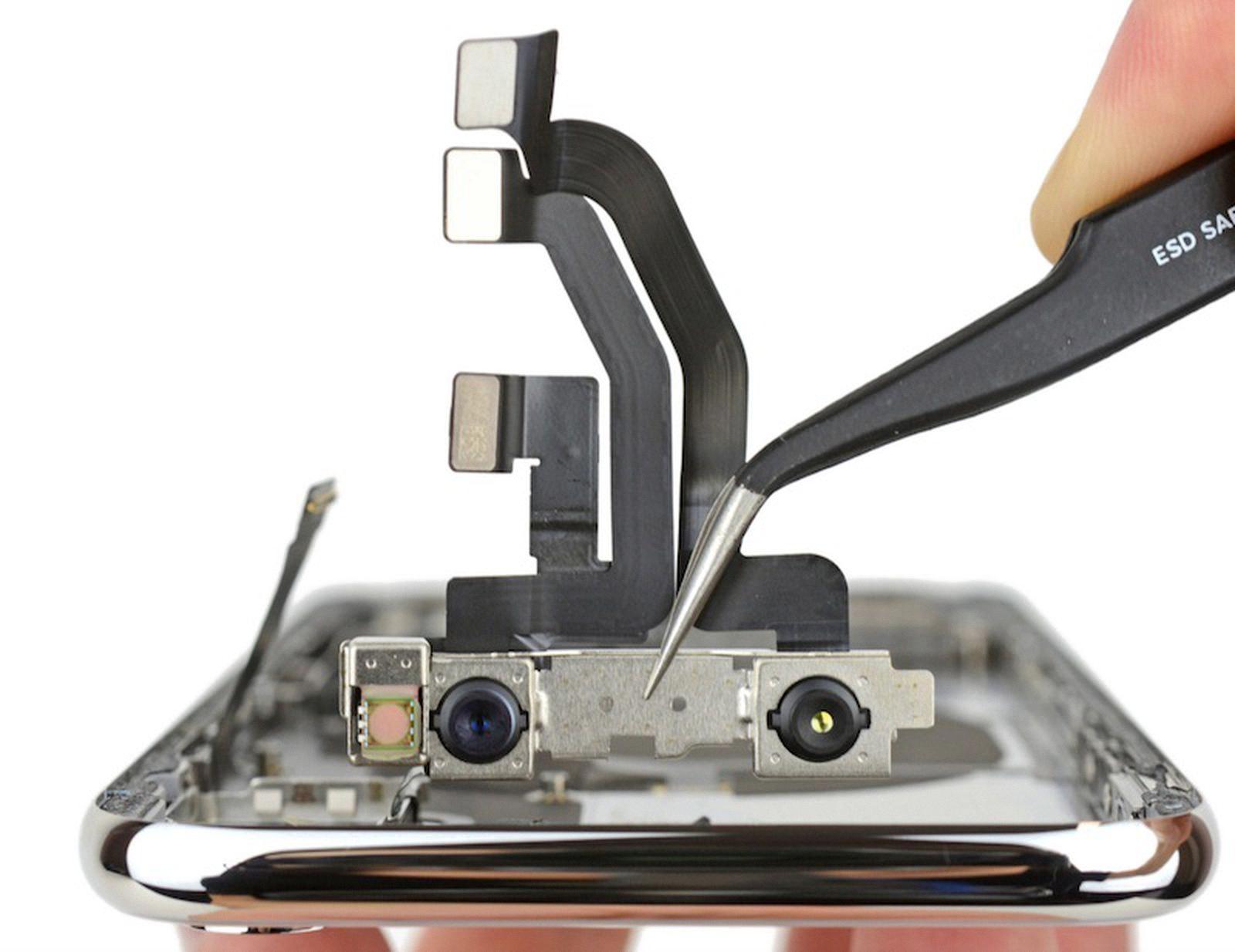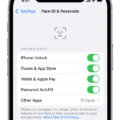The TrueDepth camera is an innovative feature found in Apple devices, such as the iPhone and iPad, that enables advanced facial recognition technology known as Face ID. This camera system consists of various components, including a dot projector, flood illuminator, and infrared camera, which work together to create a detailed depth map of your face.
With the TrueDepth camera, you can unlock your device, make secure payments, and access various apps by simply looking at your device. This technology has revolutionized the way we interact with our devices, providing a convenient and secure authentication method.
However, like any other technology, the TrueDepth camera may encounter issues from time to time. One common problem is when the camera is covered by an object, such as a smudge, case, or screen protector. It is important to ensure that nothing obstructs the camera’s view in order for it to function properly.
If you are using an iPad in landscape orientation, make sure that your finger or palm is not covering the TrueDepth camera. This can unintentionally block the camera and prevent it from accurately scanning your face.
If you have checked for any obstructions and the TrueDepth camera is still not working, you may consider resetting all settings on your device. Sometimes, changes to certain settings can affect the functionality of the camera. To do this, go to Settings, then General, and select Reset. From there, choose Reset All Settings. Keep in mind that this will reset all of your personalized settings, but it may help resolve any issues with the TrueDepth camera.
Another way to verify if your TrueDepth camera is functioning properly is to test it by taking a selfie in portrait mode. Open the Camera app, select Portrait mode, and choose the front-facing camera. Snap a selfie and check if the camera captures your face accurately. If it does not, there may be a problem with the depth sensor or other components of the TrueDepth camera system.
In some cases, damage to the TrueDepth camera system, such as water damage, can also cause issues with Face ID. This may result in an “unable to activate Face ID” message. If you suspect water damage, it is recommended to seek professional assistance or contact Apple support for further guidance.
The TrueDepth camera is an integral part of Apple devices that enables advanced facial recognition technology. If you encounter any issues with the TrueDepth camera not working, make sure to check for obstructions, reset all settings, and verify the functionality of the camera. If problems persist, it may be necessary to seek professional assistance or contact Apple support for further troubleshooting.

Why is Your True Depth Camera Not Working?
The TrueDepth camera on your device may not be working due to several reasons. Here are some possible causes and solutions to troubleshoot the issue:
1. Obstruction: Check if anything is covering the TrueDepth camera, such as a smudge, case, or screen protector. Remove any obstruction and clean the camera lens if necessary.
2. Orientation: If you are using your iPad in landscape orientation, ensure that your finger or palm is not covering the TrueDepth camera. This can block the camera’s view and prevent it from functioning properly.
3. Software or App issue: Sometimes, the TrueDepth camera may not work due to a software glitch or conflict with a specific app. Try restarting your device and check if the camera starts working again. If the issue persists, consider updating your device’s software or contacting the app’s support team for assistance.
4. Hardware malfunction: In rare cases, the TrueDepth camera may have a hardware malfunction. If you have tried the above steps and the camera still doesn’t work, it is advisable to contact Apple Support or visit an authorized service center for further diagnosis and repair.
Remember to follow the manufacturer’s guidelines and recommendations when troubleshooting your device’s camera.

How Do You Reset Your True Depth Camera?
To reset the TrueDepth Camera on your iPhone, you can follow these steps:
1. Open the Settings app on your iPhone.
2. Scroll down and tap on “General.”
3. In the General settings, scroll down again and tap on “Reset.”
4. You will see several reset options, but for resetting the TrueDepth Camera, choose “Reset All Settings.”
5. A confirmation prompt will appear, informing you that this action will reset all settings to their default values. It’s important to note that this will not erase any of your data or media.
6. Tap on “Reset All Settings” to proceed with the reset.
7. You may be asked to enter your passcode or use Face ID to confirm the reset.
8. Your iPhone will then reset all settings, including those related to the TrueDepth Camera.
9. Once the reset process is complete, your iPhone will restart, and the TrueDepth Camera should be reset to its default settings.
Please keep in mind that resetting all settings will not erase any of your personal data, but it may affect some customized settings like Wi-Fi passwords, display settings, and privacy preferences. Therefore, it’s a good idea to take note of any important settings before performing the reset.
By following these steps, you should be able to reset your TrueDepth Camera and potentially resolve any issues you were experiencing.
How Do You Know If Your True Depth Camera is Working?
To verify if your iPhone’s TrueDepth camera, which includes the depth sensor, is working properly, you can follow these steps:
1. Open the Camera app on your iPhone.
2. Tap on the “Portrait” mode option at the bottom of the screen. This mode utilizes the TrueDepth camera to create a depth-of-field effect in your photos.
3. Make sure you have selected the front-facing camera if you want to test the TrueDepth camera’s functionality for selfies.
4. Position yourself within the frame and take a selfie by tapping the shutter button as you would normally do.
5. After capturing the selfie, check the resulting photo to see if the portrait effect is applied correctly. The depth effect should blur the background, keeping your face in focus.
If the background appears blurred and your face is in focus, it indicates that the TrueDepth camera and depth sensor are functioning properly. However, if the photo doesn’t have the intended depth effect or the background isn’t adequately blurred, there might be an issue with the TrueDepth camera.
In such cases, you can try the following troubleshooting steps:
1. Ensure that your iPhone’s software is up to date by going to Settings > General > Software Update and installing any available updates.
2. Restart your iPhone by pressing and holding the power button until the slider appears. Then, slide to power off, and after a few seconds, turn it back on.
3. Check for any physical obstructions that may be blocking the TrueDepth camera. Clean the camera lens and ensure there are no smudges or debris.
4. If the issue persists, you can contact Apple Support or visit an authorized service center to get further assistance.
Remember, these steps are specifically for testing the TrueDepth camera’s functionality in portrait mode. The TrueDepth camera also plays a crucial role in other features, such as Face ID, Animoji, and Memoji. If you encounter issues with any of these features, it may indicate a problem with the TrueDepth camera as well.
Can Water Ruin True Depth Camera?
Water can potentially damage the TrueDepth camera system, including the dot projector. The TrueDepth camera system is responsible for enabling Face ID on devices such as iPhones. Water damage to this camera system can lead to various problems, including the inability to activate Face ID.
One common issue that arises from water damage is the display of an error message stating “Unable to activate Face ID.” This message indicates that the flood illuminator, which is a crucial component of the TrueDepth camera system, has been affected by water. The flood illuminator is responsible for projecting infrared light onto the user’s face to create a depth map for Face ID recognition.
When water damages the flood illuminator, it interferes with its ability to function properly. Consequently, the device cannot activate Face ID, as the flood illuminator is unable to project the necessary infrared light. This error message serves as an indication that the flood illuminator needs to be repaired or replaced.
To resolve this issue, the affected device needs to undergo a flood illuminator transfer. This process involves transferring the data stored in the damaged flood illuminator to a new one. By replacing the damaged component, the device can restore its Face ID functionality. It’s important to note that this procedure should only be performed by a trained professional or authorized service provider to ensure proper repair.
Water damage can indeed ruin the TrueDepth camera system, specifically the flood illuminator, leading to the inability to activate Face ID. To resolve this issue, a flood illuminator transfer is required, which involves replacing the damaged component with a new one. It is advisable to seek professional assistance for such repairs.
Conclusion
The TrueDepth camera is an integral part of Apple’s Face ID technology, which provides secure and convenient authentication on devices such as iPhones and iPads. However, it is important to ensure that nothing is obstructing the camera, such as smudges, cases, or screen protectors. Additionally, if the camera is not functioning properly, it may be necessary to reset all settings on the device. It is also worth noting that damage to the TrueDepth camera system, including the dot projector, can result in Face ID issues. Therefore, it is essential to handle the device with care and avoid water damage.








